It is probably safe to say that most, if not all, architecture is meant to be noticed. Buildings are not typically designed to be hidden away, but to boast a little, high-five its neighbours, and invite people in.
This is especially so for many public buildings. Lyon’s Swanston Academic Building in Melbourne, the Perth Arena by ARM Architecture, and SAHMRI in Adelaide from Woods Bagot excel in being “loud and proud”, and not without the results to prove it works.
Cabin 2, however, seems to do quite the opposite. Designed by Maddison Architects as a self-contained addition to an existing 1960’s log cabin in Blairgowrie, Victoria, this residential project was envisioned to grow out of the land, and camouflages with its surrounds.
This design strategy to be ‘invisible’ was heavily informed by the extension’s landscape – the surrounding coastal Moonah woodland forgivingly hides the suburban-like density of houses, and the network of winding roads are free of formed kerb, gutters and footpaths.
Shrouded by trees, the concealment is so effective that a colourful sign had to be erected to show where the entry to the home is.
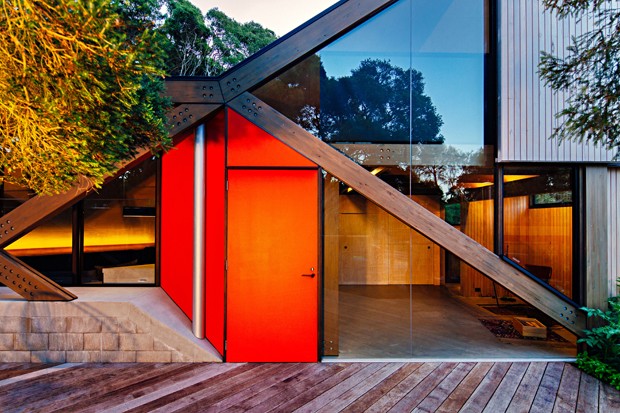
A roof grows from the topography to act as a new type of landform, its folding form doubling as a thermal chimney for ventilating windows. Double insulated, it is supported by a skeletal frame that seems to move in tandem with the prevailing wind forces that shape the surrounding Moonah trees.
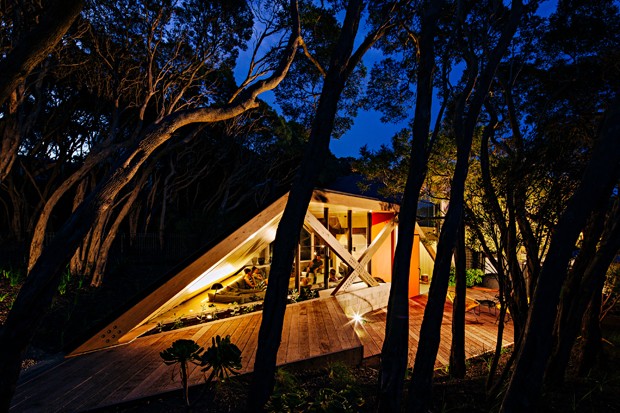

This timber structure (plantation grown radiate pine) is prefabricated, H3 treated and glue laminated, which according to the architects had a net effect of reducing construction time, minimising wastage and enabling an exact geometry. The exposed laminated beams anchor the building to site.
“The monolithic plinth is purposefully part sunken into the land and hollowed out to emphasise a feeling of refuge and physical engagement with the site,” the architects explain. This form and movement is translated within the home, with spaces feeling like they were dug down into the sand.
“In a way it’s getting back to mid-century style architecture where everything is embedded in the structure and not lifted in,” Peter Maddison, who heads the practice, told Domain in an earlier interview.
“The seating is part of the architecture. The materials are humble too. There's no plasterboard. It's all been lined with ply or Stringybark cladding timbers that have then been limed to take the honey-colour out and to make it all softer on the eye.”

The internal volume directly reflects the sloping roof, and the skeletal frame is fully exposed inside and out to convey a structural and architectural honesty.
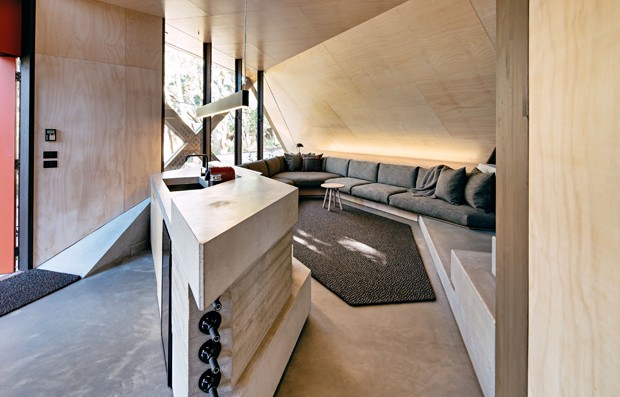
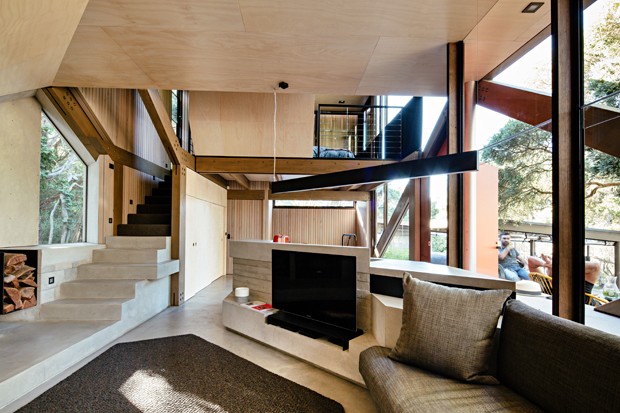
Timber is the dominant material of the project, with FSC certified and chain of custody plywood lining and radial sawn regrowth hardwood cladding expressing the materiality of the grain.
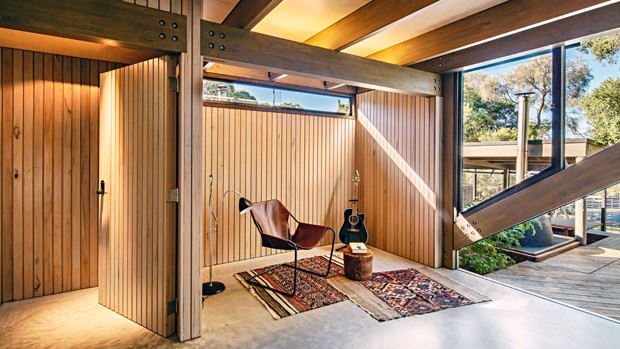
In terms of ESD, passive solar design principles were employed for the project, with a strong emphasis placed on natural cross ventilation. The entire northern façade is fully glazed to work with the thermal mass of the insulated concrete floor, and the southern windows are double glazed.
Large external sliding sun screens provide an additional active control to the upper bedroom, while roof water is harvested to storage tanks and utilised for the gardens.
Minimising the project’s site impact and limiting the removal of existing trees was also an important factor for the architects. On this end, new fence lines and indigenous planting have been staggered to blur abstract property boundary lines and “hopefully expand the feeling of the site beyond its immediate confines.”
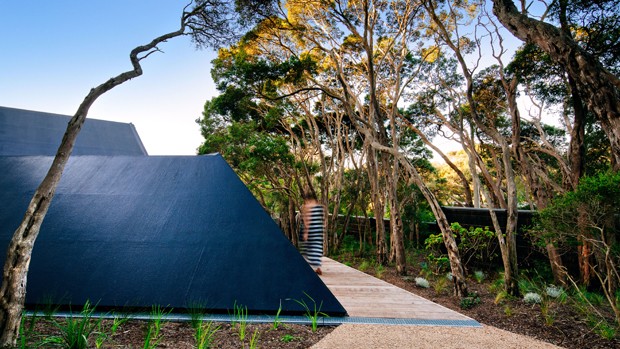
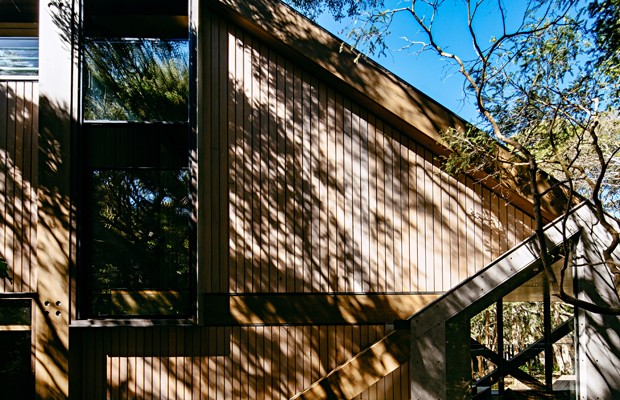
Sitting peacefully with its landscape and offering both shelter and refuge for occupants, Cabin 2 proves that out of sight architecture (just so) is not necessarily out of mind.
Photography by Will Watt
Cabin 2 by Maddison Architects won the Australian Timber Design Awards’ Residential Class 1 – New Buildings prize, and was named a finalist at the 2014 VIC Architecture Awards. Winners of the VIC Awards progressed on to the AIA National Architecture Awards, with winners to be viewed here.

